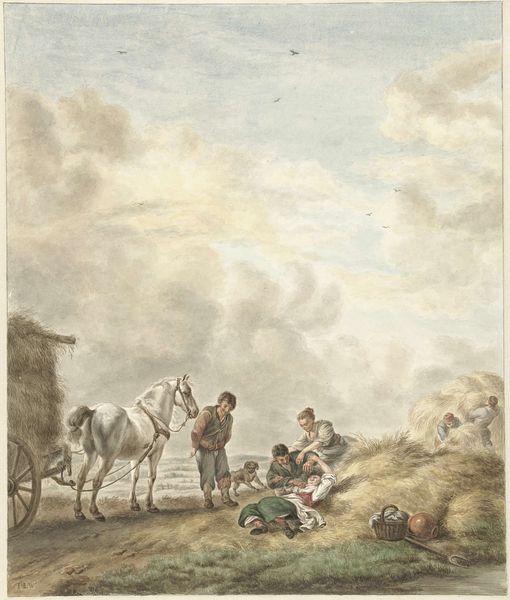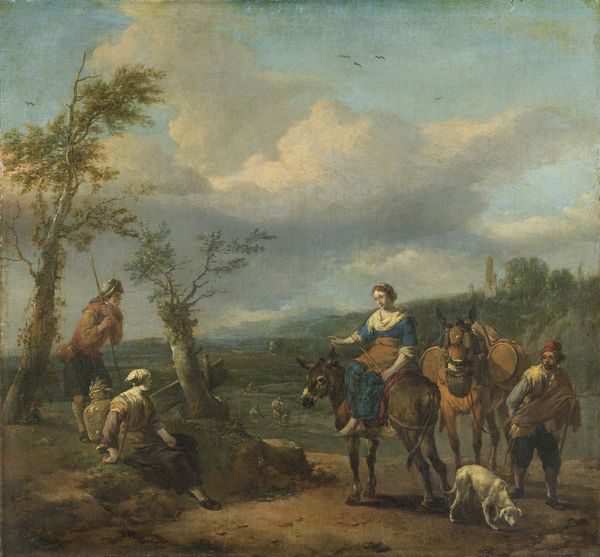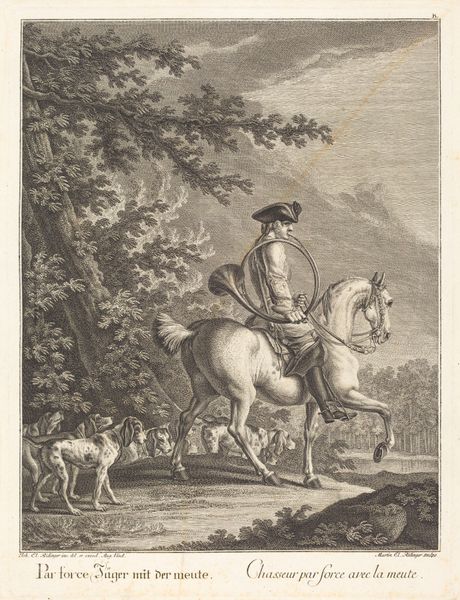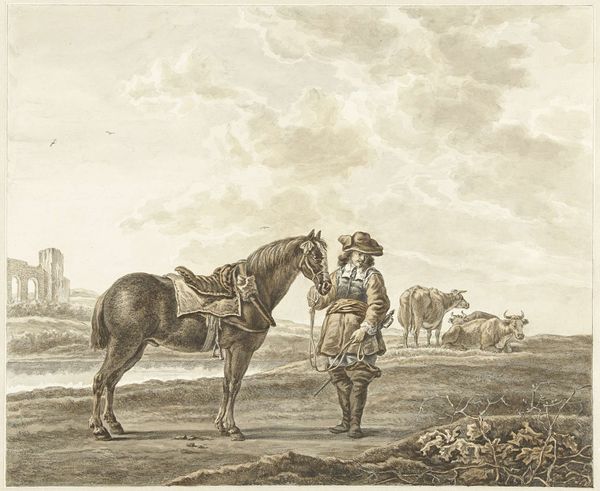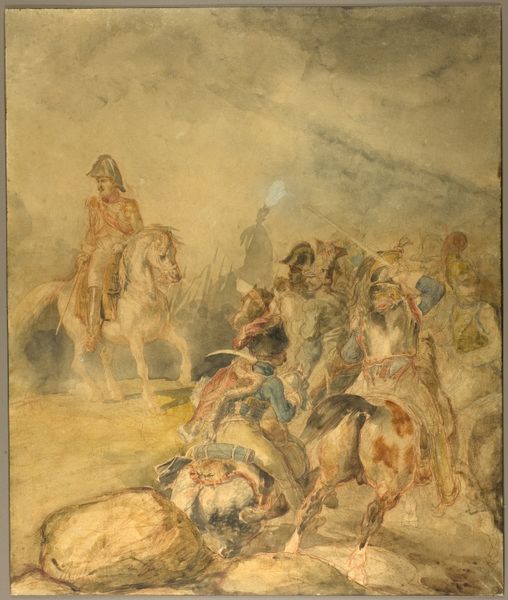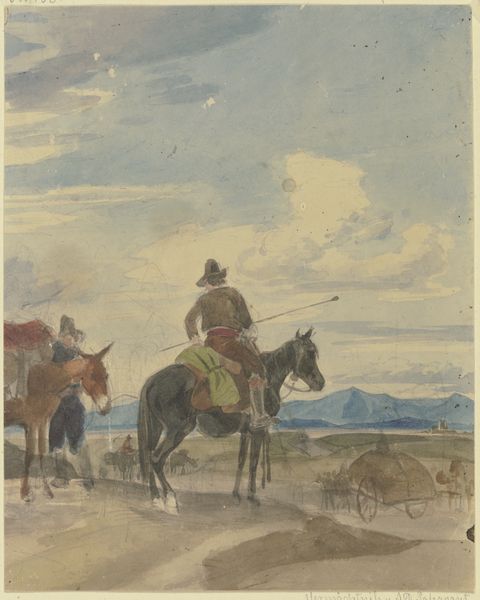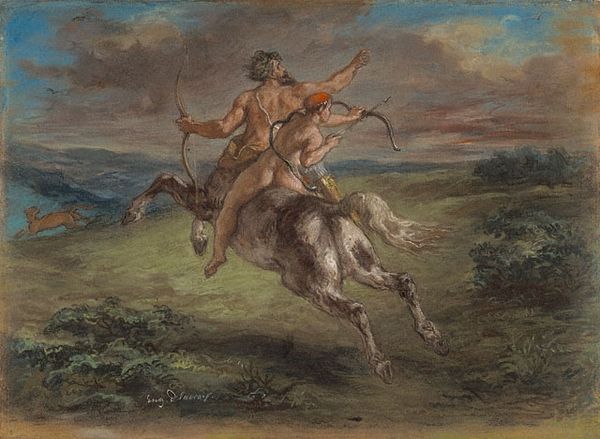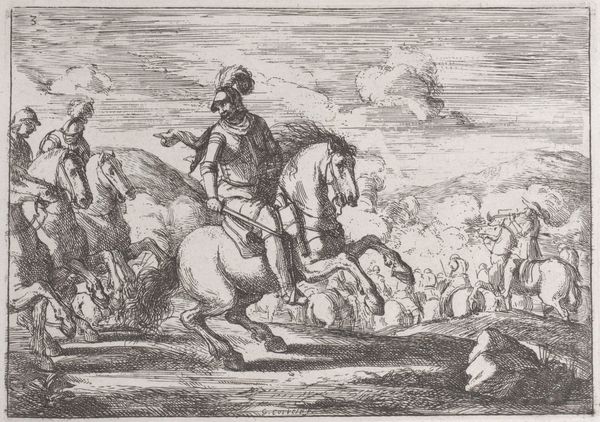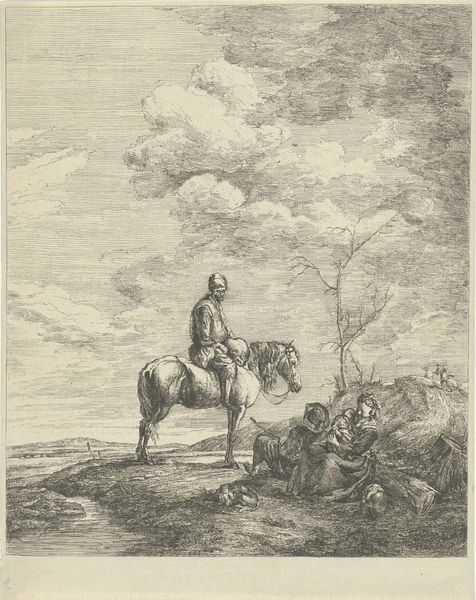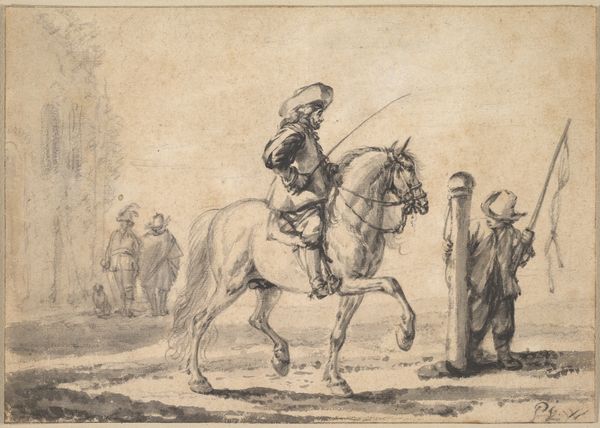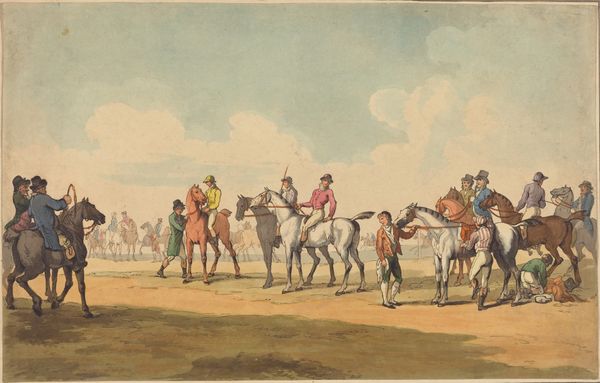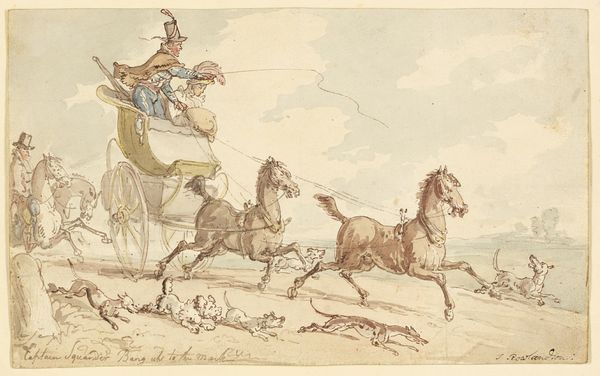
painting, watercolor
#
gouache
#
figurative
#
painting
#
landscape
#
charcoal drawing
#
figuration
#
oil painting
#
watercolor
#
romanticism
#
orientalism
#
genre-painting
#
watercolor
Copyright: Public Domain: Artvee
Curator: Let's turn our attention to Eugène Delacroix's "Three Arab Horsemen at an Encampment," created sometime between 1832 and 1837. Editor: It has a luminous quality, wouldn’t you say? The colors are applied with such loose washes that it gives the whole piece a dreamlike, almost transient feeling. Curator: Absolutely. And that's partly due to Delacroix's masterful use of watercolor. The layering and blending create depth despite the simplicity of the visible brushstrokes. The material properties of watercolor lend themselves to that effect. But beyond the technique, we must acknowledge the historical and social context of Orientalism informing its imagery, and reflect on its production. Editor: Indeed, the interplay of light and color directs the eye to the main figure on horseback. Consider how the cool blues and greens of his robe contrast with the warm browns of the horse. The semiotics of the colors guide us to perceive a man of perhaps high status amid the rugged landscape. Curator: The clothing, tent construction, and choice of subject speak to both the artist’s access and presumed intentions. While aesthetically beautiful, its role in shaping perceptions and possible exploitative consumption must also be addressed. These were not simply ethnographic documents but products deeply intertwined with colonial power dynamics. Editor: I appreciate that insight. Looking at the composition itself, observe how the artist has used line and form to create movement. The diagonal of the central horseman, balanced by the horizontal rest of the figures gives it such balance and an elegant aesthetic feeling overall. Curator: The movement is implied in the activity of constructing an image, reflecting how the romantic movement of its period idealized and somewhat fetishized foreign culture within larger socio-political power structures. The exotic image in itself becomes a valuable commodity. Editor: These are some intriguing perspectives regarding how we appreciate art from the past. Curator: And perhaps understand our present too. Thank you.
Comments
No comments
Be the first to comment and join the conversation on the ultimate creative platform.
